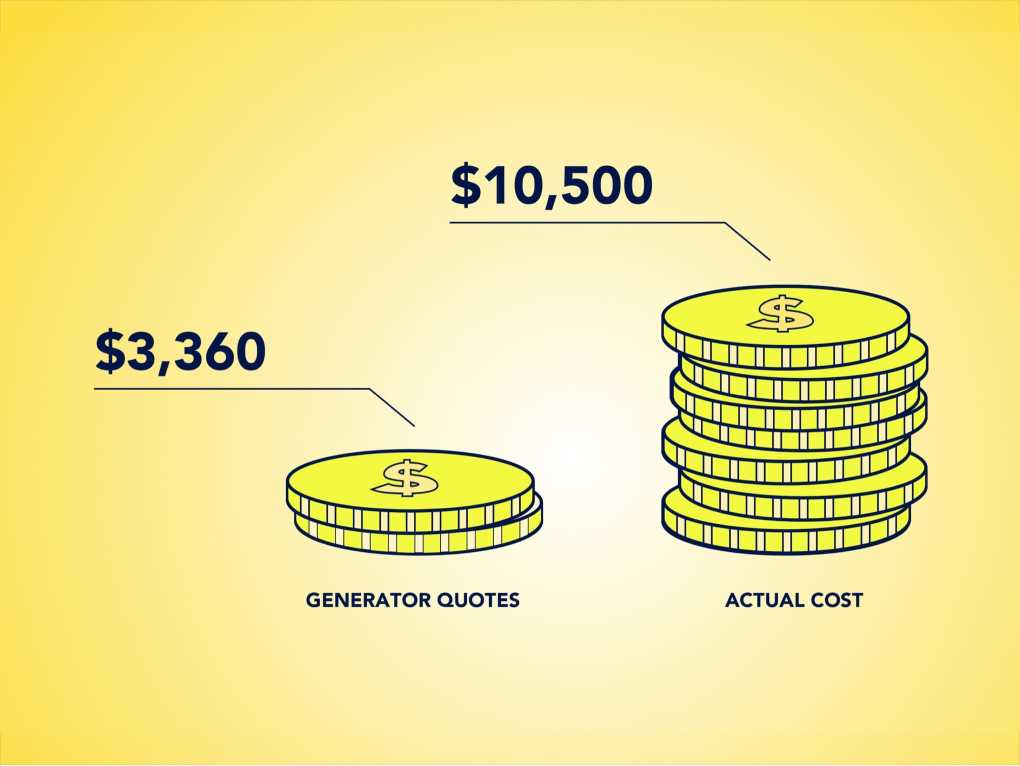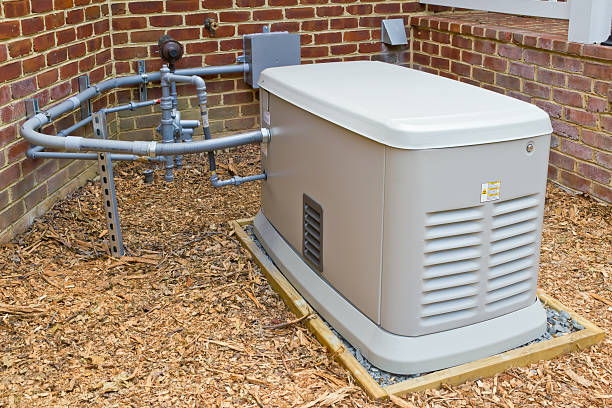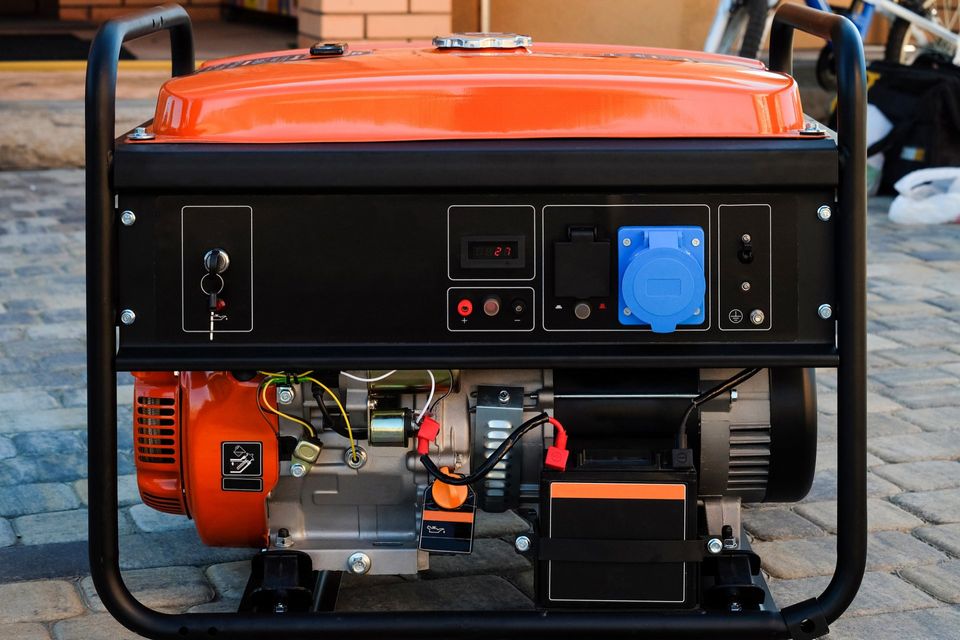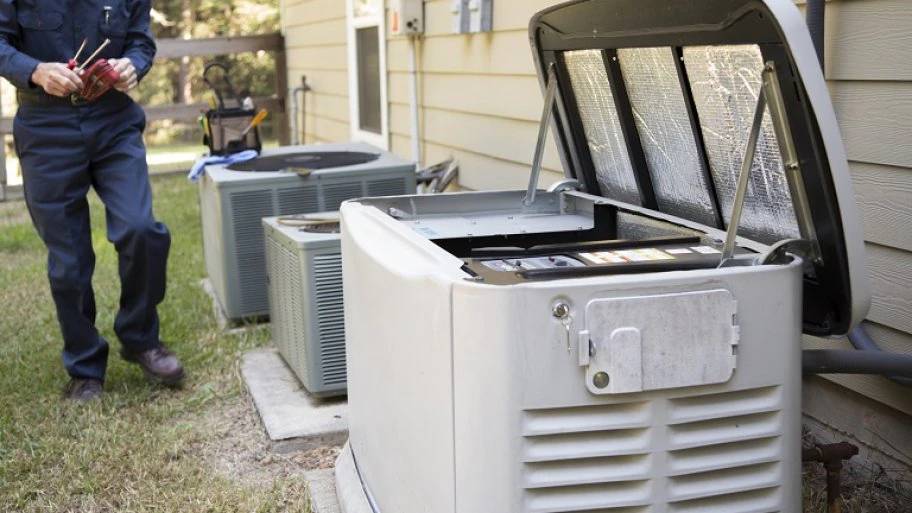If you are planning to install a whole house generator for your home, you really should know the options available and how much each of these options would cost. The cost breakdown for a project of this kind would include items like the price of the generator and transfer switch. Shipping and installation costs do count as well. A propane gas tank may also be required, which would add to the total.
Here are some of the items that add to the cost of installing a whole house generator:
Generator Price
 Whole house generators have power ratings that typically range from 5KW to 100KW. Some of these run on propane, some on diesel, and others on natural gas. Petrol (gasoline) is another fuel option used primarily for smaller generators (below 15KW).
Whole house generators have power ratings that typically range from 5KW to 100KW. Some of these run on propane, some on diesel, and others on natural gas. Petrol (gasoline) is another fuel option used primarily for smaller generators (below 15KW).
As you would expect, the price of a generator would generally increase as the power rating goes up. In other words, generators with higher power ratings tend to cost more than those with lower power ratings. Also, when you consider fuel options, generators that run on propane tend to be the cheapest, while diesel generators are usually the most expensive. We will go into the details of the costs of each of these options much later in this article.
Transfer Switch Price
When it comes to transfer switches, there are two variants – manual and automatic. Manual transfer switches generally cost less than $500, while automatic ones could cost as much as $1,000. Just in case you are not familiar with these, here is the difference between the two. Manual transfer switches will require someone to manually switch over the power source to your generator whenever there is a power failure. You will also have to start the generator yourself. On the other hand, the automatic switches over power to the generator by itself and signals the generator to start. That way, there will be nothing for you to do; you will barely even notice that there has been a power cut.
Installation Costs
Finally, we have to consider the cost of installation. Generally, the size and type of whole house generator to be installed affect the cost. Generators that run on propane would
also require a propane gas tank, and that can also increase the installation cost. This is partly due to the extra piping work required.
All in all, installation costs for a whole house generator could be as much as $1,000. And if a gas tank (for propane generators) needs underground installation, the work could cost more due to the digging required.
How to Determine Which Options Are Best for Your Residence?
So basically, the options you choose play a major role in calculating the total cost of installing a whole house generator. Here are some of the factors that can help you determine which option is best for your home:
Peak Power Consumption (Wattage)
The prime factor determining which whole house generator option to go for is the peak power consumption of your residence. Kilowatts is the unit for measuring peak power consumption (expressed with the KW or KVA symbol). Now, the general rule is to go for a generator whose KVA rating is equal to or higher than your peak power consumption.

If you cannot calculate the peak power consumption for your residence, you should consult a qualified electrician to advise you. But you can also determine that for yourself if you have a bit of technical knowledge. The process is quite simple – find out the power rating for each electrical appliance in your home (including the lighting fixtures), and add them up. Most electrical appliances have their power ratings written somewhere behind or under them – you only need to look for it.
There is something else you must also consider. Some electrical appliances have two different power ratings – the starting watts and the running watts. The starting watts are the much higher power required in the first few seconds after the appliance switches on. For example, some refrigerators can have a starting power rating of up to 3,000 watts, but after the first few seconds, the power rating drops to just 600 watts. So, make sure you consider the extra watts needed to start some of the appliances that fall into this category.
Now, here’s the slightly tricky part: almost all household appliances have their power ratings stated in Watts, while generator manufacturers express the power rating of their machines in kilowatts. But this isn’t a problem at all. Anyone with the slightest technical knowledge knows that 1 kilowatt equals 1,000 Watts, and both units are interchangeable.
So, if your home has a peak power rating (sum of the power ratings of all the appliances in your home) of 20,000 Watts, it simply means you need a generator with a power rating equal to or above 20 kilowatts.
In some cases, it could be okay to choose a generator whose power rating is less than your peak power rating. But this means that you would have to be careful not to use all of your household appliances at the same time whenever the generator is powering your home. Of course, this is not ideal. It is safer to choose a generator whose power rating is slightly higher than your peak power consumption.
After you’ve determined the power rating you require, it becomes easy to make a choice. Here is a list of the typical power rating and fuel options available, and their respective prices (estimates):
- 10KW (natural gas) – $3,000
- 15KW (natural gas) – $4,000
- 15KW (diesel) – $12,000
- 20KW (natural gas) – $5,000
- 20KW (diesel) – $13,000
- 25KW (natural gas) – $5,500
- 30KW (natural gas) – $11,000
- 30KW (diesel) – $15,000
- 40KW (natural gas) – $14,000
- 60KW (natural gas) – $19,000
- 80KW (natural gas) – $25,000
You should know that the prices listed above do not include shipping or installation.
Fuel Safety, Availability, Reliability, and Convenience
 Another factor determining which whole house generator is suitable for your residence is the safety and convenience of each fueling option. The availability of the fuel type in your area should also be a consideration. If you live in a locality with no natural gas supply, buying a generator that runs on natural gas would be out of the question. Also, you may need to consider other options if you are concerned about supply interruptions during a natural disaster.
Another factor determining which whole house generator is suitable for your residence is the safety and convenience of each fueling option. The availability of the fuel type in your area should also be a consideration. If you live in a locality with no natural gas supply, buying a generator that runs on natural gas would be out of the question. Also, you may need to consider other options if you are concerned about supply interruptions during a natural disaster.
On the other hand, before you choose a propane-powered generator, you must make sure that suppliers of Liquid Propane are willing to drive their LPG supply trucks to your area. Suppliers of LPG may be reluctant to deliver to some locations. This would cause problems if you had already installed a generator that runs on propane before realizing this. There are also safety issues to be considered – storing LPG in your backyard is a fire hazard that could be disastrous if not handled properly.
Generally, the natural gas option is convenient, as you do not need to worry about refueling. But it may be unreliable since the gas supply could be interrupted during a natural disaster – just at the time you need it most! Also, just like propane, natural gas can be dangerous too. And it isn’t available everywhere, especially in remote or rural locations.
On the other hand, one can obtain diesel even in the remotest locations. But this option is not so convenient because you would constantly need to refuel. And if any natural disaster that restricts movement (like a snowstorm) should occur, you may find it difficult to obtain fuel for your diesel generator.
Also, consider that diesel generators are louder and can be inconvenient for you and your neighbors.
All these and more are things you should carefully consider when deciding which fuel option to choose. And ultimately, your choice will affect the total cost. Remember that the propane option is the cheapest of them all, and the diesel option is far more expensive!
Conclusion
In conclusion, installing a whole house generator should cost anywhere between $5,000 for a 10KW gas-powered generator and $30,000 for an 80KW gas-powered generator. These estimates include the cost of the generator, transfer switch, and propane tank (where necessary). It also includes shipping and installation costs.
